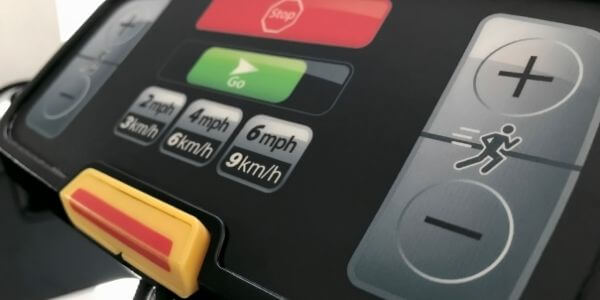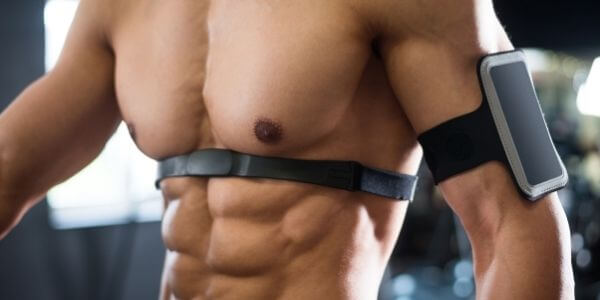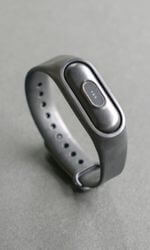Treadmills are fun exercise machines that most people recognise for their high calorie-burn potential.
You know that feeling you get when you look down at your treadmill’s screen and see 500 or 700 calories burnt. This number can give you the motivation you need to come back for more next time.
But people come in all shapes and sizes. So how does a treadmill know the exact number of calories each user burns?
This article discusses the variables that your treadmill considers when spewing out that number. We’ll also analyse the calorie counter’s accuracy and what you can do to get a more precise measurement.
Keep reading below!
Table of Contents
How do Treadmills Calculate Calories?
Each time you hop on a treadmill at the gym, it will ask you to input the following details:
- Age
- Weight
- Height
Adding this data may annoy you, but these variables are essential for determining your calorie expenditure. During the exercise, your treadmill will compute other factors too:
- Heart rate
- Speed
- Incline
- Distance
- Time
The calories you burn during exercise are a function of these variables. You would use the same factors to gauge calorie burn if running outdoors. The only difference is that treadmills are more accurate because they can better measure speed, distance, and incline.
How do treadmills get this formula?
The formula is based on human subjects working out in lab conditions. Scientists measure these people’s O2 and CO2-related partial pressures, and that’s how they get extremely accurate calorie burns.
Once they have enough data from enough subjects, scientists do a regression-based process and find a formula based on a linear model. Of course, this model isn’t 100% accurate because some variables aren’t considered (e.g., running technique).
That brings us to the following point:
How Accurate Is a Treadmill Calorie Counter?

Your treadmill counter may be highly accurate or grossly inaccurate. It all depends on the variables your running band asks you to input when you begin your exercise.
So the more variables you input, the more chances you have for a correct estimate.
But that’s the keyword here: estimate. No gym machine is 100% inside your body to see each calorie burn with its own eyes.
That’s why most people complain their treadmills overestimate the number of calories burnt during a run. Consider the variables we discussed in the section above. Treadmills don’t ask you other essential questions such as:
- Your body composition. You may have more muscles than someone with the same height and weight. That means your caloric burn can be higher because muscles accelerate your metabolic rate.
- If you’re a runner or not. Avid runners burn fewer calories than newbies because their bodies are already used to this routine. It sounds counterintuitive, but think about it. A beginner’s heart rate goes through the roof at 10 km/h, whereas a pro won’t break a sweat. That accelerated pulse rate indicated a higher calorie consumption.
The excellent news is treadmills are usually relatively accurate in those estimates. That said, here’s where a treadmill can go wrong:
- Your treadmill doesn’t ask about your weight. In this case, it uses a reference of 155 pounds. If you weigh less, your caloric burn may be overestimated by 15-20%.
- Your treadmill doesn’t use heart rate measurements. If your heart rate is slower than the average used by the treadmill, it means you’re burning fewer calories.
Pro tip: If your running band doesn’t have built-in pulse sensors in the handrails, don’t hold on to them unnecessarily. Sure, you can do that if walking/running destabilises you, and you still have to build your mobility and strength. That said, know that when you’re holding onto those handlebars, your caloric burn can be lower by 20-40%.
But if treadmills aren’t 100% accurate, what would be the most precise way to measure calories burned?
Find out in the section below, which we suggestively titled:
Most Accurate Way to Measure Calories Burned

Some lower-end treadmills and other no-frills cardio equipment don’t measure your calories well because they:
- Lack heart rate measurements
- Don’t ask specific questions about your weight, height, age, body composition, etc.
- Have screens that backfire, meaning they don’t register precise distance, time, incline, and speed
- Don’t take into account your workout intensity and type of workout (e.g., HIIT vs steady-state running)
Therefore, if you want a calorie burn reading that’s as close as possible to reality, purchase a reliable treadmill that at least measures the standard stats correctly. Then, consider purchasing a heart-rate monitor.
This monitor is worthwhile because it:
- Helps you plan workouts that burn more calories.
- Shows you calorie burn during exercise. That way, you can increase workout intensity to reach the fat-burning zone where your body starts using your fat stores as fuel.
- Allows you to pace yourself. If your heart rate is too high, you know that you can always take a break and recover.
- Helps you with your HIIT sessions. During low-intensity intervals, your heart rate should go down. High-intensity periods should bring your heart rate at 80% of the maximum level.
Here’s what you can choose:
Chest straps are the most accurate. You wear this strap below your chest, keeping the tracker in front. The belt transmits the info about your pulse to your smartphone.

Fitness watches are less accurate. They will send your pulse directly to your phone or even the treadmill. Fitness watches are comfortable to wear and won’t slip down while you’re running.
Pro tip: If your treadmill allows you to connect that heart rate monitor via Bluetooth, do it. That way, the treadmill will factor in your pulse and give you a more accurate caloric read.
Otherwise, you’ll have to input all data related to personal factors and workout-related variables into an online calorie-burn calculator.
In Conclusion
When dealing with treadmill calorie counters, it’s most likely that your calorie burn will be overestimated. So when you don’t see the expected progress, you can get demotivated and even quit exercise. Alternatively, you may be pushed into an exaggerated calorie restriction plan.
None of that is helpful in the long term.
A good solution is to purchase a separate heart rate monitor and connect it to your treadmill. Even better, you would need a treadmill with top-notch tracking and app connectivity.
- Here’s What Doing Cardio Every Day Does To Your Body - August 21, 2024
- How To Lose Weight (Without Exercising or Dieting) - August 21, 2024
- How to Get Rid of Belly Fat (Without Crunches) - August 21, 2024

